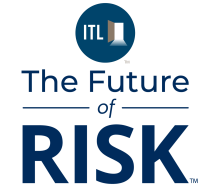The digital transformation occurring throughout all levels of the claims management industry is not new. It began years ago and is just now beginning to truly shake up this sector. At Sedgwick, we have been focused on the next generation of digital tools, but it's critical to understand where we've been, where we are now, and where we're going. If companies want to ensure they are maximizing this exciting new technology.
Where We've Been
The claims industry has been leveraging analytical AI for years at this point, such as in predictive modeling programs. More recently, the advent, and rapid adoption, of generative and agentic AI have emerged as key differentiators for third-party administrators (TPAs). Understanding how companies can leverage this technology, and creatively and effectively apply it to different lines of business to drive new and improved outcomes, will be a deciding factor in terms of success.
Most companies in our industry started in the same place when generative AI burst on the scene two and a half years ago: document summarization. While we were all starting to recognize the power of generative AI, that technology began to evolve at exponential speed. Everyone learned to fail fast in this space and spent significant time understanding the new features as they came out every month. Many companies introduced initiatives using data extraction and analysis from claims-related documents, while others explored whether large language models (LLMs) could support automated customer support options. Keeping up with AI's advances drove IT teams to prototype rapidly, but generative AI itself prompted companies to re-evaluate their initial use cases every day.
What did we learn? The keys to success haven't changed: Robust data sets, data science maturity to understand what the data means, and industry-leading claims practice are still the critical components to establish a foundation for digital transformation of the industry. Changing an age-old claims workflow is no easy task and cannot be accomplished overnight. Tech-enabled best practices must be paired with specific goals that prioritize efficiency, customer experience, and results to achieve a claims life cycle that is smarter, faster, and more engaging than ever.
Where We Are Now
Generative AI is already changing the way the industry responds to customers and handles the rapid pace of claims. However, most current efforts are now centered on incorporating agentic AI solutions into claim workflows. At a very basic level, the practice of applying this technology leverages a series of small microservices (utility agents) that are driven by the intelligence and logic of generative AI's analysis of new information. An agentic AI system breaks down a workflow into tasks and subtasks, which then use the utility agents in a "squad" to perform a particular function.
Business practices will be working through transformation exercises for years to come as they look at true agentic AI-driven digital transformation opportunities.
The next and the most vital step is looking beyond efficiency and driving valuable insights for claims examiners. The role of professionals in the claims process cannot be discounted and will never be fully automated. With examiners working in remote and hybrid roles, it has become that much harder to train new colleagues. It's critical to transfer institutional knowledge to the next generation of workers, and AI is now able to provide insights and guidance that is often missed in a remote work environment. Sedgwick has introduced tools at the desk level that support our incredible professionals in a way that ensures their success and eliminates administrative red tape. This approach allows our people to spend their time focusing on and speaking with claimants so they know they are in great hands.
This concept reinforces that, as exciting as these advances are, technologists and executives should always remember the people they serve. Our best-case customer journey is that our customers, who are experiencing a difficult time in their lives, will see a rapid resolution to their claim while engaging with caring, real people who solve their problems with accuracy and insight. This goal is perhaps the most important driver that we in the claims industry can deliver.
Where We're Going
Harnessing the power of agentic AI requires a creativity that recognizes long-term strategic goals and short-term tactical bites that guide a claims administrator from A to Z. It is about problem solving in a very human way and allowing our colleagues to take advantage of these incredible tools to broaden understanding and transform the industry forever.
I'm very excited as we think forward to the new capabilities that we expect from generative and agentic AI this year. Virtual agents will finally become proficient in holding real conversations with customers. The pairing of robust data science capabilities with agentic AI frameworks will allow companies to reimagine their claims processes from end-to-end. And tools that drive insight and action at the desk level will become a part of the daily routine as humans work side by side with agents.
This is all to say that the extensive work and experience that got us to where we are today is as important as where we are heading. Through exceptional colleagues, data science, models, the very best in the claims industry, and agentic AI, the claims industry is poised to lead a bright future for clients and claimants around the world.






